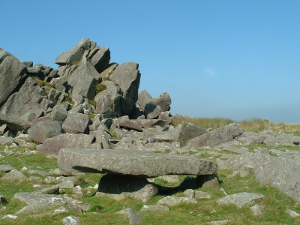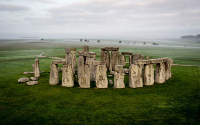|
Tools, Testing Pinpoint Origin of Stonehenge Bluestones: Wales
February 25, 2019
The massive rocks that now make up Stonehenge were dragged there from Welsh quarries 180 miles away, archaeologists said. The archaeologists, led by University College London's Michael Parker Pearson, said that the bluestones, the earliest of the large stones at the famous monument on the Salisbury Plain, came from Carn Geodog and Craig Rhos-y-felin, two quarries in the Preseli hills, in Pembrokeshire. Chemical testing at Stonehenge found matches to the areas around the quarries. As well, the ancient Britons excavated the quarries about 3000 B.C. and then transported the giant stones to their current location using human-powered wooden sleds. Using ropes and simple tools, the ancient people would have had a somewhat easy time of it because the bluestones were not buried inside larger areas of rock. The key, the scientists said, was in the makeup of the stones, which were magma that pushed up from the ground in much earlier times and then cooled into columnar shapes. As time went by, much of the surrounding rock, which was softer, eroded. The result was the naturally vertical bluestones. In those days, people would have used a tool like a sandstone wedge to help pluck the bluestone from the remaining surrounding rock and, using a sturdy rope, pulled it free. The archaeologists found such tools, along with hammer stones, in the two quarries. The bluestones are in the interior of the collection of rocks at Stonehenge. The taller and more familiar standing columns are known as sarsen stones. The archaeologists are also of the opinion that the ancient peoples dragged the stones over land, rather than sending them on barges down the western coast of ancient Britain. One well-known attempt to duplicate such a feat, in 2000, ended in failure when the stone-laden raft sank just offshore. The overland theory would be more in line with a current theory for the building of Egypt's Pyramids as well. |
Social Studies for Kids |
Social Studies for Kids
copyright 2002–2024
David White






